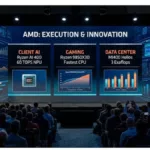In the harrowing aftermath of September 11, 2001, one of the most glaring and tragic failures identified was not of intelligence but of interoperability. The 9/11 Commission Report painstakingly detailed how different agencies, from the FAA to NORAD and the FBI, were unable to effectively share critical information in real-time because their systems couldn’t talk to each other. This digital Tower of Babel hampered the national response and highlighted a fundamental vulnerability. In the decades since, the challenge has only grown more complex. Now, a unique solution born from that crisis, the Syndeo Intelligent Gateway from Agile Empowerment Technologies, offers a powerful new approach to securely bridging these digital divides—not just for government, but for the corporate world as well.
A Cure for a Self-Inflicted Wound
The post-9/11 mandate was clear: connect our agencies. This led to the rise of initiatives under organizations like the Defense Information Systems Agency (DISA), tasked with creating a unified network for the Department of Defense and other federal bodies. The goal was noble and necessary: create a seamless flow of information to ensure a coordinated response to any threat. However, in solving one problem, DISA’s efforts inadvertently created a new can of worms: a vast, interconnected network with an exponentially larger attack surface.
Every new connection between once-siloed systems became a potential new backdoor for adversaries and a nightmare for access management. How do you grant a user from one agency access to a specific dataset in another without giving them the keys to the entire kingdom? This is the precise problem the Syndeo Intelligent Gateway was engineered to solve. It acts not just as a simple connector, but as a smart, security-first intermediary. It allows organizations to define granular, policy-based access rules, ensuring that users and systems only see the data they are explicitly authorized to see and nothing more. It’s the digital equivalent of a security checkpoint and escort, rather than just an open door.
Modernizing with a Scalpel, not a Sledgehammer
One of the biggest hurdles in government and large-scale enterprise IT is the albatross of legacy systems. Decades-old mainframes and databases, while often still functional, create massive interoperability headaches and are prohibitively expensive to replace all at once. The common approach is a slow, costly and often disruptive “rip and replace” strategy.
Syndeo offers a more intelligent path forward. By sitting in the middle and managing the complex, often bespoke connections between these aging systems and modern platforms, the gateway gathers invaluable data. It can effectively map out the entire interoperability landscape, identifying which legacy systems require the most complex, brittle and resource-intensive connections. This provides leadership with a data-driven roadmap for modernization. Instead of guessing, they can see precisely which systems are the biggest technological drags and prioritize their replacement for the most significant and economical impact.
A Bridge for Corporate Mergers
While Syndeo was forged in the crucible of national security, its applications in the commercial sector are profound, particularly in the chaotic world of mergers and acquisitions (M&A). When two large companies merge, they bring with them entirely different IT ecosystems—one might run on SAP, the other on Oracle; their HR systems, CRMs and financial platforms are rarely compatible. The process of integrating these systems typically takes years and costs millions, delaying the realization of merger synergies.
Syndeo can act as an instant bridge. Rather than embarking on a massive, multi-year integration project, the newly combined entity can use the gateway to connect their disparate systems seamlessly and securely on day one. This allows for the immediate sharing of critical business data, from sales pipelines to supply chain logistics, while the longer-term IT strategy is developed. It transforms a major M&A pain point from a roadblock into a manageable, phased process.
Preventing the Next Snowden
Perhaps Syndeo’s most critical feature is its ability to prevent the kind of catastrophic insider breach personified by Edward Snowden. The Snowden leaks were enabled not by a sophisticated hack, but by excessive and poorly audited access privileges. He was able to access and exfiltrate vast amounts of data because the systems had no effective way of enforcing “need-to-know” at a granular level or flagging anomalous data access patterns.
The Syndeo gateway is designed to thwart this very scenario. Its security model is built on a zero-trust foundation, meticulously controlling and logging every single data request and transaction that flows through it. Access can be restricted not just by user, but by time of day, location and the specific data fields being requested. An administrator attempting to download an entire database would trigger immediate alerts. This creates an auditable, enforceable security perimeter that can drastically reduce the risk of both malicious insider threats and external attacks.
Wrapping Up
The Syndeo Intelligent Gateway is a powerful reminder that true innovation often arises from profound necessity. Born from the need to solve the critical interoperability and security failures revealed by 9/11, it has evolved into a versatile tool for digital transformation. By enabling secure and intelligent connections between disparate systems, it offers a pragmatic path to modernizing legacy government IT, a powerful accelerator for corporate M&A and a robust defense against the kind of insider threats that have caused irreparable harm to national security. In a world of increasing digital complexity and ever-present threats, Syndeo provides a much-needed layer of secure, intelligent control.








